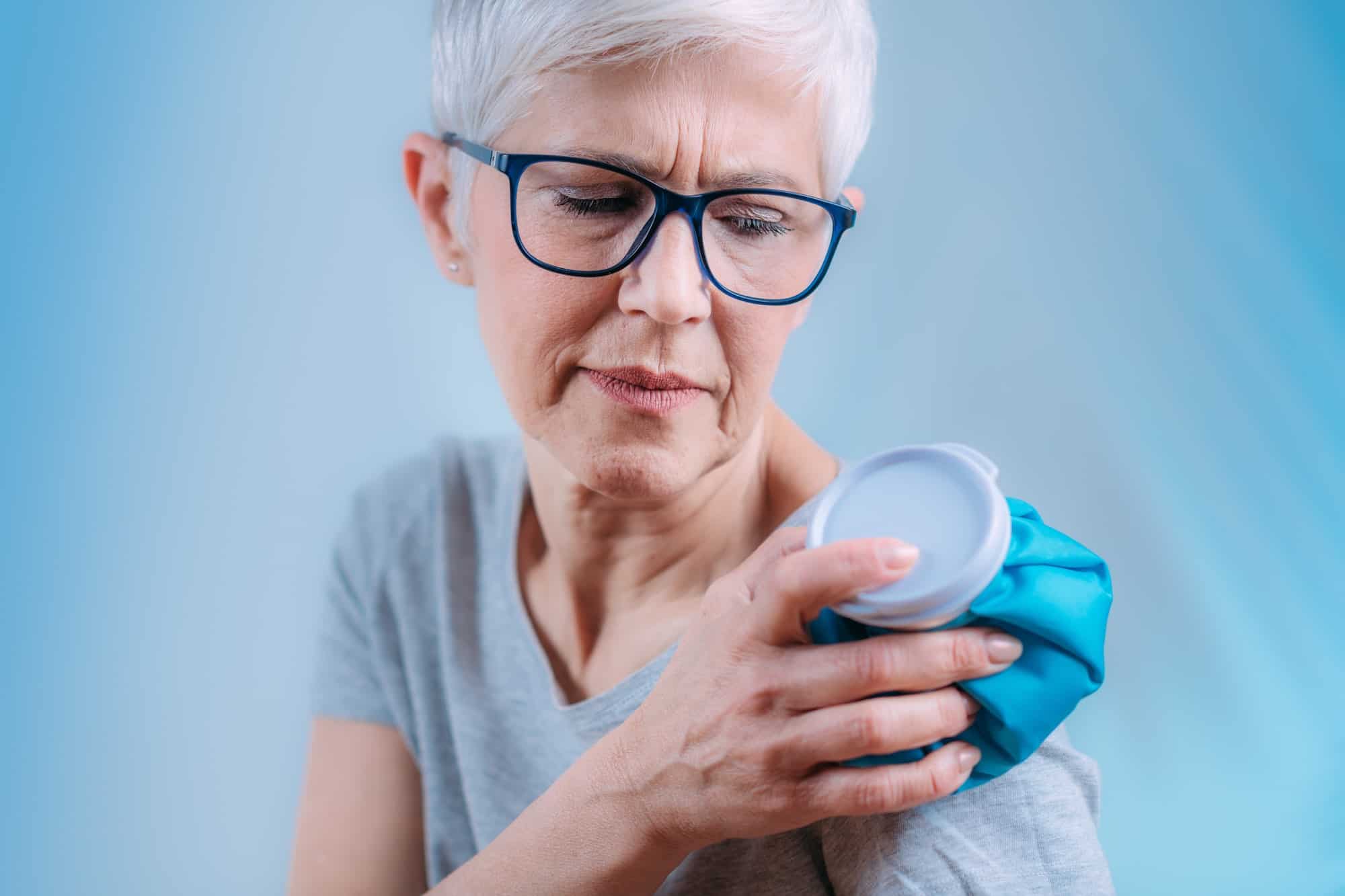These are VERY common pelvic symptoms that occur during and after pelvic cancer and breast cancer treatment and it is often caused by dryness in the vulva (outer genitals) and vagina (inner canal)*. Chemotherapy, radiation therapy (to the pelvis), and endocrine therapy (i.e. hormonal therapy) can all contribute to these pelvic symptoms.
Living with vulvovaginal dryness after cancer can be very uncomfortable and downright painful, impacting simple day-to-day activities and even intimacy and sexual intercourse. Though we cannot erase the impact that cancer treatment has on the pelvic floor, there are relatively simple things YOU can do to improve your symptoms.
This blog will focus on one of the simplest things you can do to improve vulvovaginal dryness after cancer treatment: using moisturizers and lubricants.
(*Note: If you are experiencing vulvovaginal itching, burning, irritation and pain, it is always important to be physically examined by your doctor prior to beginning any form of treatment or self-management.)
Lubricants and Moisturizers: What’s the Difference?
Many women (and men) that I speak with are surprised when I explain the difference between a vaginal lubricant and moisturizer. To be truthful, most aren’t even aware that vulvovaginal moisturizers exist!! There’s a BIG difference so let me explain further.
- Vaginal lubricants
This is what most people are familiar with. A vaginal lubricant is a gel-like substance that is designed for short-term use to increase lubrication while decreasing friction to the sensitive vaginal tissues (which are typically more sensitive after pelvic and breast cancer treatment.) Lubricants are most commonly used during sexual intercourse. (Note: Lubricants do not protect you from sexually transmitted diseases or pregnancy.)
- VulvoVaginal Moisturizers
These products are specifically designed to provide longer-lasting moisture to the vagina and vulva. They are typically used on a regular basis to maintain tissue hydration and comfort. Just like you may put moisturizer on other areas of your body, your vulva and vagina need a little help too!
What EVERY PERSON Needs to Know about Personal Lubricants
Choosing the right lubricant can be a little overwhelming. Though there are so many products to choose from, many of the commonly available vaginal lubricants actually have detrimental effects on the vaginal tissue (1)! In 2012, the World Health Organization released an advisory note identifying their concerns about the unsafe pH and osmolality levels in many commonly used personal lubricants (2).
Many of the commonly available vaginal lubricants actually have detrimental effects on the vaginal tissue (1).
- pH: Avoiding Overly Acidic Products
The pH level refers to how alkaline or acidic a product or environment is. The pH level of a healthy vagina ranges from 3.8 – 4.5. Unfortunately most personal lubricants’ pH are out of this safe range. This can irritate the vaginal tissue, alter the vaginal microbiome and expose women to a higher risk of developing bacterial vaginosis. Since the vaginal tissues are already more sensitive after pelvic and breast cancer treatment, we want to avoid further irritation caused by a lubricant with a high pH level.
- Osmolality: Keeping Moisture IN the Vagina
Osmolality refers to a substance’s ability to draw moisture out of tissues and cells. Exposing the vaginal tissues to a lubricant with high osmolality will actually draw moisture OUT of the vaginal tissues. For women already experiencing vaginal dryness and atrophy after cancer treatment and/or menopause, this will further increase the risk of tissue irritation, injury and possibly increase the risk of sexually transmitted infections. The normal osmolality of female vaginal secretions is 260-290mOsm/kg. Ideally, the osmolality of personal lubricants should not exceed 290mOsm/kg but most lubricants FAR EXCEED this level.
More on Personal Lubricants: Ingredients to Avoid
To be blunt, there is a lot of “garbage” in many vaginal lubricants, and the internet is a confusing place to figure out what ingredients you should try to avoid. Here are 5 ingredients that I strongly recommend you stay away from:
- Parabens (e.g. methylparaben, propylparaben)
These are preservatives that may cause vaginal irritation (3). Some studies have identified parabens as an endocrine disrupter and suggest it may be linked to fertility problems and some cancers (4,5). However, further research is needed to support this.
- Flavours or Fragrance
If the words “flavor”, “fragrance” or “aroma” is present in the ingredient list, this represents a combination for undisclosed chemicals which can irritate your tissues. Many harmful chemicals can be “hidden” under this type of wording so you can’t be certain what is actually in the product. Ideally, it is best to avoid lubricants with this wording.
- Chlorhexidine gluconate
This is a disinfectant chemical which can disrupt certain healthy bacteria in the vaginal microbiome. (6)
- Alcohol
Alcohol is very drying to your tissues… why add something drying to a product that’s supposed to add moisture? (Yep… I don’t know why either!)
- Glycols (common names: glycerol, glycerin and propylene glycol)
These are moisturizers that are largely responsible for the osmolality of a lubricant. When present in too high of a concentration, they are what can cause significantly high osmolality levels in a lubricant.
VulvoVaginal Moisturizers
Remember that we cannot reverse the pelvic changes that have been caused by your cancer treatments. Chemotherapy, radiation and endocrine (hormonal) therapy contribute to vulvovaginal dryness in ways that are long-lasting. However, using a regular moisturizer specifically designed for your vulva and vagina is an extremely effective way to add hydration back to these tissues and make you MUCH more comfortable.
Oil-Based Moisturizers
I’m including this here because I get A LOT of questions about this one. “Natural” oils (e.g. coconut oil, almond oil and olive oil) can be enticing as we automatically think that it’s better than something that’s “manufactured.” However, the research about its safety is still lacking.
Anecdotally, I have found that an oil-based moisturizer on the vulva (external genitalia) is generally well-tolerated. However, using these products vaginally (i.e. internally) is where the jury is still out. I certainly have had clients successfully use oils as a vaginal moisturizer, but there is some scientific evidence showing that the use of coconut oil may promote an overgrowth of unhealthy bacteria (7), leading to yeast infections and bacterial vaginosis. As a result, I typically do not recommend these products for internal use.
Hyaluronic-Acid Based Moisturizers: The “Secret Sauce”
All of the moisturizers that I recommend to my cancer rehab clients include hyaluronic-acid (HLA). This is because HLA has been shown to deliver high amounts of water to the tissues, which then provides an effective moisturizing effect (and also increases the elasticity of the tissues) (8). There have also been numerous studies suggesting that HLA-based vaginal moisturizers are the optimal non-hormonal choice for cancer survivors in reducing unpleasant symptoms, improving vaginal pH and improving “sexual function” (8, 9, 10).
How to Use a Moisturizer?
Regardless of the product you use, I always recommend women use BOTH a vaginal and vulval moisturizer. If the vaginal moisturizer you are using is a cream-based product, you can apply a little to your fingertip to use on the vulva as well. If, however, your vaginal moisturizer is in a tablet or ovule, then I would also purchase a separate vulvar moisturizer to maximize your comfort.
At the beginning, it is often helpful to use it 1x/day for 2 – 4 weeks. After that time, using it 2-3x/week is typically enough (though some women choose to use it more frequently, based on their symptoms.) Applying the moisturizer before bedtime is ideal (vs in the morning) so it will stay in the vagina for longer and is less likely to be absorbed into your clothing.
Product Choice Made Simple
As I mentioned earlier, there are a LOT of products out there but so many of them do NOT fall into the “safety rules” I’ve described above. Even some of the common products my clients are recommended by their health care providers contain some the ingredients that may cause tissue irritation (as mentioned earlier).
Though companies are obliged to put their ingredient lists on their packaging, most do not put their pH and/or osmolality levels anywhere. As a result, I’ve done A LOT of research (including emails and calls when websites didn’t give the information I wanted) and have created a recommended product list for you of vaginal lubricants and moisturizers. Click on the link below to download this product list and save for future reference.
References
- Wolf, KL (2012) Studies raise questions about safety of personal lubricants. Chemical and Engineering News. Vol. 90. No. 50, pp. 46-47. December 10, 2012.
- World Health Organization (2012) Use and procurement of additional lubricants for male and female condoms: WHO/UNFPA/FHI360 Advisory note. Department of Reproductive Health and Research. 2012. Available at: http://apps.who.int/iris/bitstream/10665/76580/1/WHO_RHR_12.33_eng.pdf
- Gali,Y, Delezay O, Brouwers J, Addad N, Augustijns P, Bourlet T, Hamzeh-Cognasse H, Arien KK, Pozzetto B and Vanham G. (2010) In Vitro Evaluation of Viability, Integrity, and Inflammation in Genital Epithelia upon Exposure to Pharmaceutical Excipients and Candidate Microbicides. Antimicrobial Agents and Chemotherapy, Vol. 54, No. 12, pp. 5105–5114. Dec. 2010.
- Darbre P.D. and Harvey P.W. (2008) Paraben esters: review of recent studies of endocrine toxicity, absorption, esterase and human exposure, and discussion of potential human health risks. Journal of Applied Toxicology. Vol. 28, No. 5, pp:561-578. July 2008.
- Smith, KW, Souter, I, Ehrlich,S, Williams, PL, Calafat, AM and Hauser, R. (2013) Urinary paraben concentrations and ovarian aging among women from a fertility center. Environmental Health Perspectives. Vol. 121, Issue 11-12, pp. 1299-1305. December 2013.
- Dezzutti CS, Brown ER, Moncla B, Russo J, Cost M, Wang L, Uranker K, Kunjara Na Ayudhya RP, Pryke K, Pickett J, Leblanc MA and Rohan LC. (2012) Is wetter better? An evaluation of over-the-counter personal lubricants for safety and anti-HIV-1 activity. PLoS One.7(11):e48328. 2012. Available at: http://journals.plos.org/plosone/article?id=10.1371/journal.pone.0048328
- Hung, K. J., Hudson, P. L., Bergerat, A., Hesham, H., Choksi, N., & Mitchell, C. (2020). Effect of commercial vaginal products on the growth of uropathogenic and commensal vaginal bacteria. Scientific reports, 10(1), 7625. https://doi.org/10.1038/s41598-020-63652-x
- Carter, J., Baser, R. E., Goldfrank, D. J., Seidel, B., Milli, L., Stabile, C., Canty, J., Saban, S., Goldfarb, S., Dickler, M. N., Gardner, G. J., Jewell, E. L., Sonoda, Y., Kollmeier, M. A., & Alektiar, K. M. (2021). A single-arm, prospective trial investigating the effectiveness of a non-hormonal vaginal moisturizer containing hyaluronic acid in postmenopausal cancer survivors. Supportive care in cancer : official journal of the Multinational Association of Supportive Care in Cancer, 29(1), 311–322. https://doi.org/10.1007/s00520-020-05472-
- Jokar, A., Davari, T., Asadi, N., Ahmadi, F., & Foruhari, S. (2016). Comparison of the Hyaluronic Acid Vaginal Cream and Conjugated Estrogen Used in Treatment of Vaginal Atrophy of Menopause Women: A Randomized Controlled Clinical Trial. International journal of community based nursing and midwifery, 4(1), 69–78.
- Ekin, M., Yaşar, L., Savan, K., Temur, M., Uhri, M., Gencer, I., & Kıvanç, E. (2011). The comparison of hyaluronic acid vaginal tablets with estradiol vaginal tablets in the treatment of atrophic vaginitis: a randomized controlled trial. Archives of gynecology and obstetrics, 283(3), 539–543.
Disclaimer – These blogs are for general information purposes only. Medical information changes daily, so information contained within these blogs may become outdated over time. In addition, please be aware that the information contained in these blogs is not intended as a substitute for medical advice or treatment and you should always consult a licensed health care professional for advice specific to your treatment or condition. Any reliance you place on this information is therefore strictly at your own risk.





